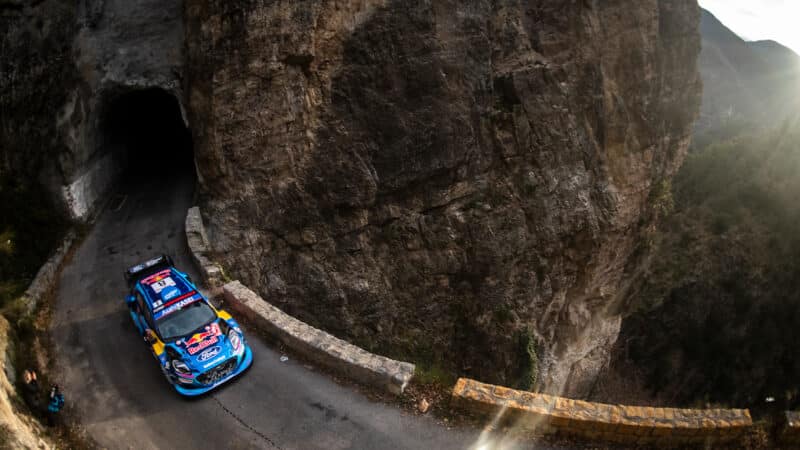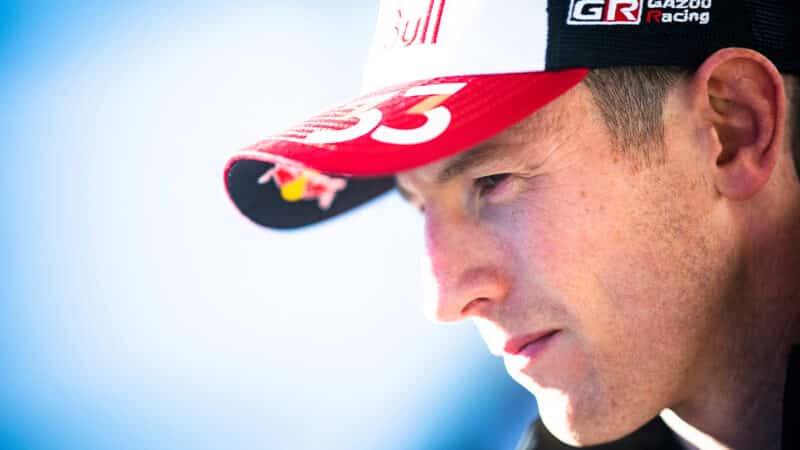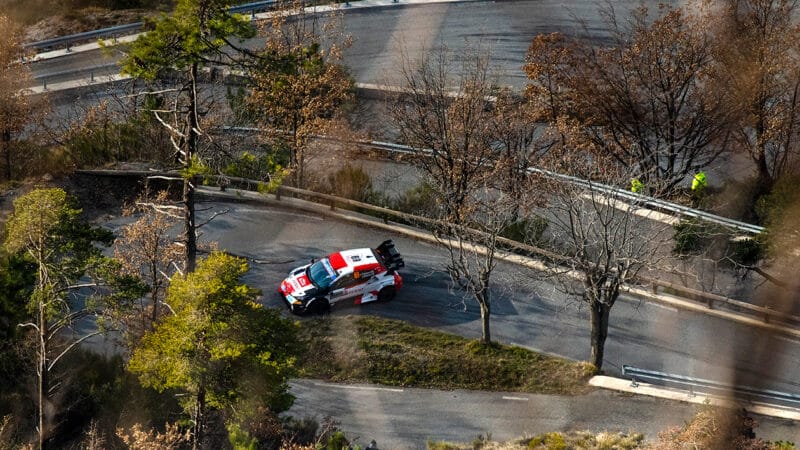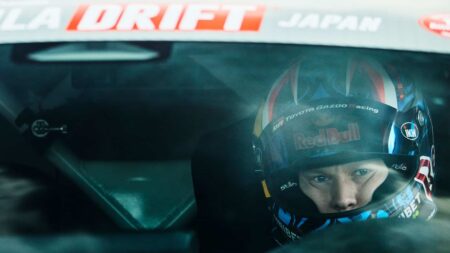The target is a sensible one. Too often in recent years, a rally’s final day has turned into a cruise with the top order largely decided, as the Rally1 crews save their powder in a hope to claim the bonus championship points on offer in the Power Stage finale. To combat that, here’s the new system. Now pay attention!
Points will now be allocated to the positions crews hold at the end of Saturday’s second leg on the following scale: 18-15-13-10-8-6-4-3-2-1. But these points will only be awarded if the crews make it to the finish on Sunday – so it’s not a case of points in the bag on Saturday, therefore take an early bath on Sunday.
In addition to the Saturday points, another batch are up for grabs on Sunday – giving the crews fresh reason to press on. They will be rewarded for the final-day finishing order with a straightforward scale of 7-6-5-4-3-2-1 – plus the Power Stage bonuses are still available, carrying a maximum of five for the fastest driver over the test. So overall, the winning crew can still score a total of 30 points, if it heads the way on Saturday night, wraps up the victory on the Sunday and wins the Power Stage. But keeping track of it all until the dust has settled at the end of the event might not be the work of a moment.

Neuville has a new rival in the Hyundai camp with the arrival of Tänak
Red Bull
Neuville has best summed up the pros and potential cons, at least for the full-time drivers pitching for the title. “The new points will probably make the Sundays more exciting for the spectators,” he acknowledges. “Nevertheless, the impression we have as a team at the moment is that the full-time championship drivers have a little disadvantage because on Friday you have the worst road conditions” – as always, the field starts in championship order, meaning the top crews sweep the stages to the benefit of those who follow – “and you have only Saturday to try and catch back a time loss from the Friday [before most of the points are allocated].
“On the Saturday already some of the points are handed out and it’s going to make it very challenging for us when you have part-time drivers like Ogier, Kalle and even [Dani] Sordo and [Andreas] Mikkelsen [who, along with Esapekka Lappi, will share opportunities to start the third Hyundai across the season] starting from the back of the field. They can take the big points and the full-time drivers will be left with the smaller points and [there will be] smaller gaps between those points as well.
“It will make it more challenging to pull away for the championship – but the championship might be more interesting.”
That final point is key. If the system keeps Evans, Neuville and Tänak tightly bunched at the top of the points table towards a November climax, the system will be justified.

Tänak’s short-lived stint at Ford ended with his return to Hyundai
Red Bull
For the long-term, the FIA, the WRC promoter and the three Rally1 manufacturers – Toyota, Hyundai and M-Sport Ford – are working through a process of deciding which path to take on regulations: stick with an evolved version of the current hybrids, which are fast and spectacular but at €1 million for a car too costly for privateers – and haven’t achieved their target of luring in a fourth manufacturer; or promote the current, simpler and far less expensive Rally2 cars, but with a bolted on booster package to make them suitably spectacular to become the pinnacle class. As you’d expect, everyone has a view, including on when any such change should be implemented. Next year seems too early, and the consensus appears to be for 2027.
But for now the focus is trained mostly on what could be a thrilling WRC season. Ogier makes one of his intermittent appearances this weekend, the eight-time champion bidding for a remarkable 10th victory on the Monte. Meanwhile, the three likely title hopefuls will be looking for solid points to launch their campaigns – and the small supporting cast in Rally1 all have their own agendas. Toyota’s popular Japanese ace Takamoto Katsuta really should be pitching for victories in his fourth full season as a Gazoo Racing works driver; accident-prone Frenchman Adrien Fourmaux must prove to M-Sport he is ready to lead the team having stepped back to win the British Rally Championship last year; and Grégoire Munster, 25, has a golden chance to establish himself in the other Puma.
Only eight top-line Rally1 entries means another season of slim pickings at rallying’s elite level. There’s an awful lot that needs addressing through the rest of this decade. But the hopefully short-lived loss of its brightest star might well have a silver lining for 2024. We could be in for the tightest, most exciting WRC title battle in years.



